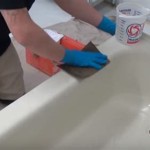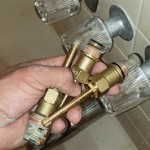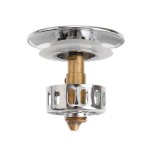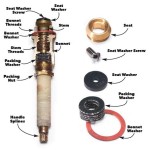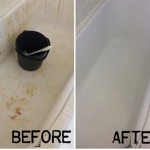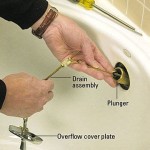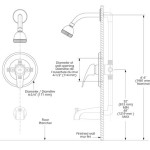How Much Is A Bathtub Replacement? A Comprehensive Cost Breakdown
Replacing a bathtub is a significant home improvement project that can enhance a bathroom’s aesthetics, increase property value, and improve functionality. However, understanding the costs involved is crucial for effective budgeting and decision-making. The total cost of a bathtub replacement is influenced by various factors, including the type of bathtub, materials, labor, and any necessary plumbing or structural modifications. This article provides a detailed breakdown of the elements contributing to the overall expense of replacing a bathtub.
Factors Influencing Bathtub Replacement Costs
Several key factors determine the price of a bathtub replacement. These factors can be broadly categorized into material costs, labor costs, and ancillary expenses. A thorough understanding of each category allows homeowners to estimate the project's potential financial burden accurately.
Bathtub Material and Type: The type of bathtub chosen significantly impacts the overall cost. Basic, standard alcove bathtubs are generally the most affordable, while more luxurious options like freestanding tubs or jetted tubs command a higher price. Materials also play a significant role. Acrylic tubs are typically less expensive than cast iron or steel tubs. Furthermore, specialty materials like copper or stone resin can considerably increase the price point.
Labor Costs: Hiring a professional plumber or contractor is essential for a successful bathtub replacement. Labor costs vary depending on the complexity of the installation, the location, and the experience of the professional. More complex installations, such as those requiring plumbing relocation or structural modifications, will naturally incur higher labor charges. Geographical location also plays a role, with metropolitan areas generally having higher labor rates compared to rural areas. Obtaining multiple quotes from licensed and insured contractors is recommended to ensure a competitive price.
Ancillary Expenses: Beyond the bathtub itself and labor costs, several ancillary expenses can contribute to the overall project price. These may include demolition and disposal of the old bathtub, plumbing modifications, tile work, drywall repair, and potential permits. Demolition and disposal costs are typically minimal, but they should be factored into the budget. Plumbing modifications can be substantial if the new bathtub requires different drain or water supply locations. Similarly, tile work and drywall repair can add significantly to the cost if the surrounding area is damaged during the removal or installation process. Depending on local regulations, a building permit may be required, which can add another layer of expense.
Detailed Cost Breakdown by Bathtub Type and Material
To provide a more concrete understanding of bathtub replacement costs, it is useful to examine the average prices associated with different types and materials. This breakdown allows homeowners to assess their options based on their budget and aesthetic preferences.
Alcove Bathtubs: Alcove bathtubs are the most common type, typically installed within a three-walled recess. They are a practical and cost-effective choice. The average cost for an alcove bathtub, including materials and installation, ranges from $800 to $4,000. The lower end of this range generally applies to basic acrylic or fiberglass models with standard installation. The higher end includes more durable materials like cast iron or steel and potentially more complex plumbing.
Drop-In Bathtubs: Drop-in bathtubs are designed to be installed within a framed enclosure, allowing for greater design flexibility. The cost of a drop-in bathtub ranges from $700 to $5,000, excluding the cost of the surrounding enclosure. The enclosure itself can be constructed from various materials, such as tile, stone, or wood, adding to the overall expense.
Freestanding Bathtubs: Freestanding bathtubs are a popular choice for modern bathrooms, offering a sleek and sophisticated look. However, they are also generally more expensive than other types. The cost of a freestanding bathtub ranges from $1,500 to $10,000 or more, depending on the material, size, and design. Installation can also be more complex, as it often requires running plumbing to a location away from the wall.
Jetted Bathtubs: Jetted bathtubs, also known as whirlpool tubs, feature jets that circulate water for a massaging effect. They are a luxurious option, but they come with a higher price tag. The cost of a jetted bathtub ranges from $2,000 to $12,000, including installation. The complexity of the plumbing and electrical connections required for the jets contributes to the higher installation cost.
Bathtub Materials: Beyond the type of bathtub, the material significantly impacts the price. Acrylic bathtubs are generally the most affordable, while cast iron and steel bathtubs are more durable but also more expensive. Specialty materials like copper or stone resin are the most luxurious and, consequently, the most expensive.
Acrylic bathtubs typically cost between $500 and $2,000. They are lightweight, easy to install, and resistant to chipping and cracking. Fiberglass bathtubs are similar in price to acrylic, ranging from $400 to $1,500. However, they are less durable and more prone to scratches and stains.
Cast iron bathtubs, known for their durability and heat retention, range from $800 to $5,000. They are heavy and require a reinforced floor, which can add to the installation cost. Steel bathtubs, also durable and resistant to scratches, cost between $600 and $3,000. They are lighter than cast iron but can be prone to chipping if not properly enameled.
Copper and stone resin bathtubs are high-end options that can cost upwards of $5,000. Copper bathtubs offer a unique aesthetic and excellent heat retention, while stone resin bathtubs provide a luxurious feel and a seamless, contemporary look.
Minimizing Bathtub Replacement Costs
While bathtub replacement can be a significant expense, several strategies can help minimize the overall cost without compromising quality or functionality. Careful planning, strategic material selection, and efficient project management can lead to substantial savings.
Retaining the Existing Plumbing Configuration: Relocating plumbing lines is one of the most significant cost drivers in a bathtub replacement project. By choosing a bathtub that fits the existing plumbing configuration, homeowners can avoid the added expense of rerouting pipes and drains. This often involves selecting a bathtub of similar size and shape to the existing one and ensuring that the drain locations align.
Choosing Cost-Effective Materials: While luxury materials may be appealing, opting for more cost-effective materials can significantly reduce the overall cost. Acrylic bathtubs, for example, offer a good balance of durability and affordability. Similarly, selecting standard tile patterns and sizes can minimize tile work expenses. Exploring different material options and comparing prices can help homeowners identify cost-saving opportunities.
DIY Demolition (With Caution): Demolishing and removing the old bathtub can be a labor-intensive process. Homeowners with some DIY experience can potentially save money by handling the demolition and disposal themselves. However, it is crucial to exercise caution and wear appropriate safety gear, as demolition can be hazardous. Furthermore, it is essential to properly dispose of the old bathtub and any debris in accordance with local regulations. If unsure about any aspect of the demolition process, it is best to leave it to a professional.
Obtaining Multiple Quotes: Obtaining multiple quotes from licensed and insured contractors is crucial for ensuring a competitive price. Different contractors may have different pricing structures and overhead costs. By comparing quotes, homeowners can identify the most cost-effective option without sacrificing quality. It is also important to verify the contractor's credentials and read reviews to ensure they have a good reputation and experience.
Planning the Project During Off-Peak Seasons: Demand for contractors and plumbers often fluctuates depending on the season. Scheduling the bathtub replacement project during off-peak seasons, such as winter or early spring, may result in lower labor costs. Contractors may be more willing to offer discounts during these periods to keep their schedules full.
Considering Refinishing as an Alternative: If the existing bathtub is structurally sound but simply outdated or stained, refinishing may be a more cost-effective alternative to replacement. Refinishing involves applying a new coating of enamel or acrylic to the bathtub surface, restoring its appearance and extending its lifespan. Refinishing typically costs significantly less than a full replacement, but it may not be suitable for bathtubs with extensive damage.
Negotiating with Suppliers and Contractors: Don't hesitate to negotiate with suppliers and contractors to secure the best possible price. Many suppliers are willing to offer discounts for bulk purchases or for customers who pay in cash. Similarly, contractors may be willing to negotiate their labor rates, especially if the project is straightforward and well-planned. Clear communication and a willingness to negotiate can lead to significant savings.
By carefully considering these strategies, homeowners can effectively minimize the costs associated with bathtub replacement and achieve their desired bathroom renovation within their budget.

Tub Replacement Cost In 2024 Forbes Home

How Much Does Bathtub Replacement Cost In 2024 Angi

How Much Does Bathtub Installation Cost In 2024 Forbes Home

How Much Does Bathtub Replacement Cost In 2024 Angi

Bathtub Tub Replacement Replace Bath Planet

How To Remove And Replace A Bathtub The Home Depot

Repairing Vs Replacing Your Bathtub

How To Remove And Replace A Bathtub The Home Depot

2024 Bathtub Replacement Cost New Tub Installation

Average Bathtub To Shower Conversion Cost In 2024 Forbes Home

